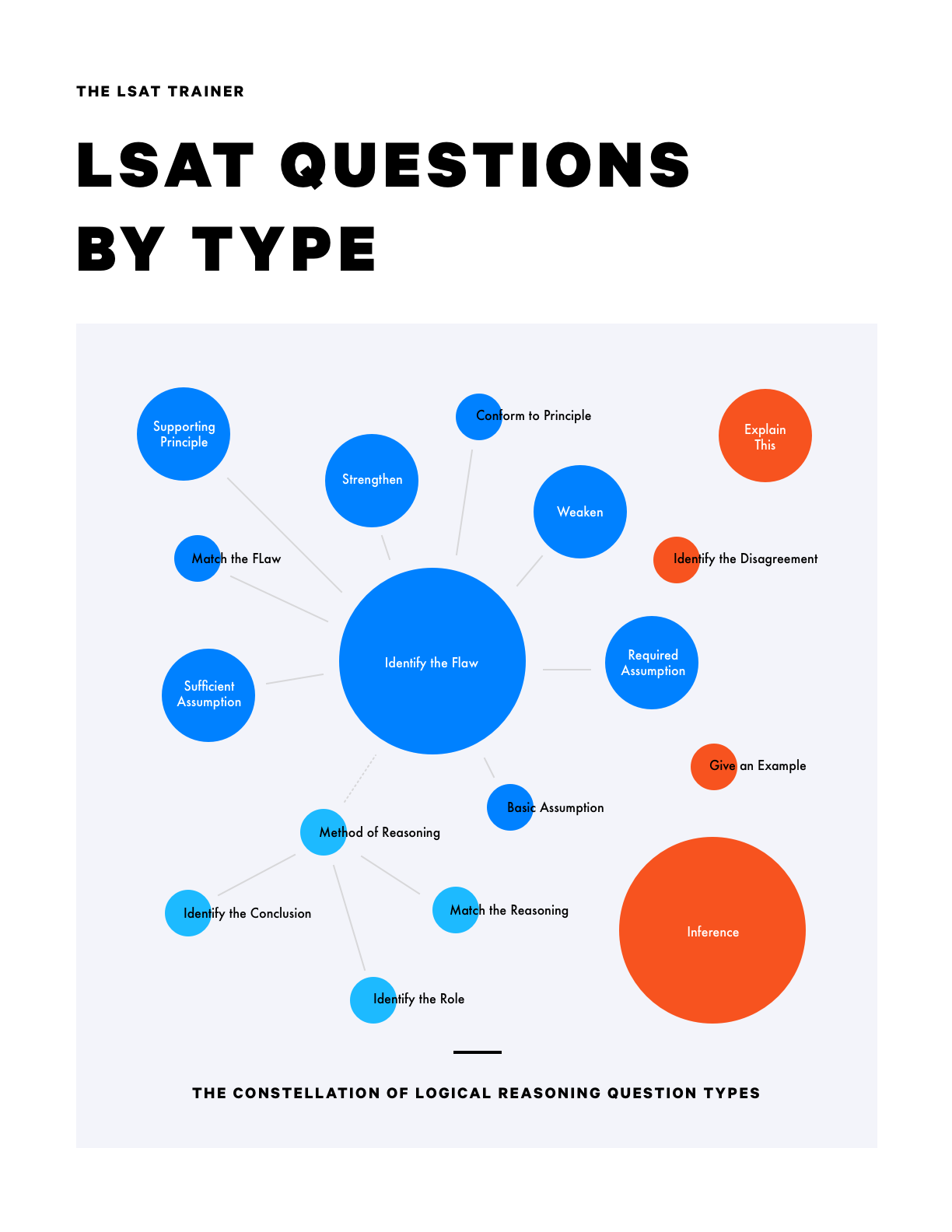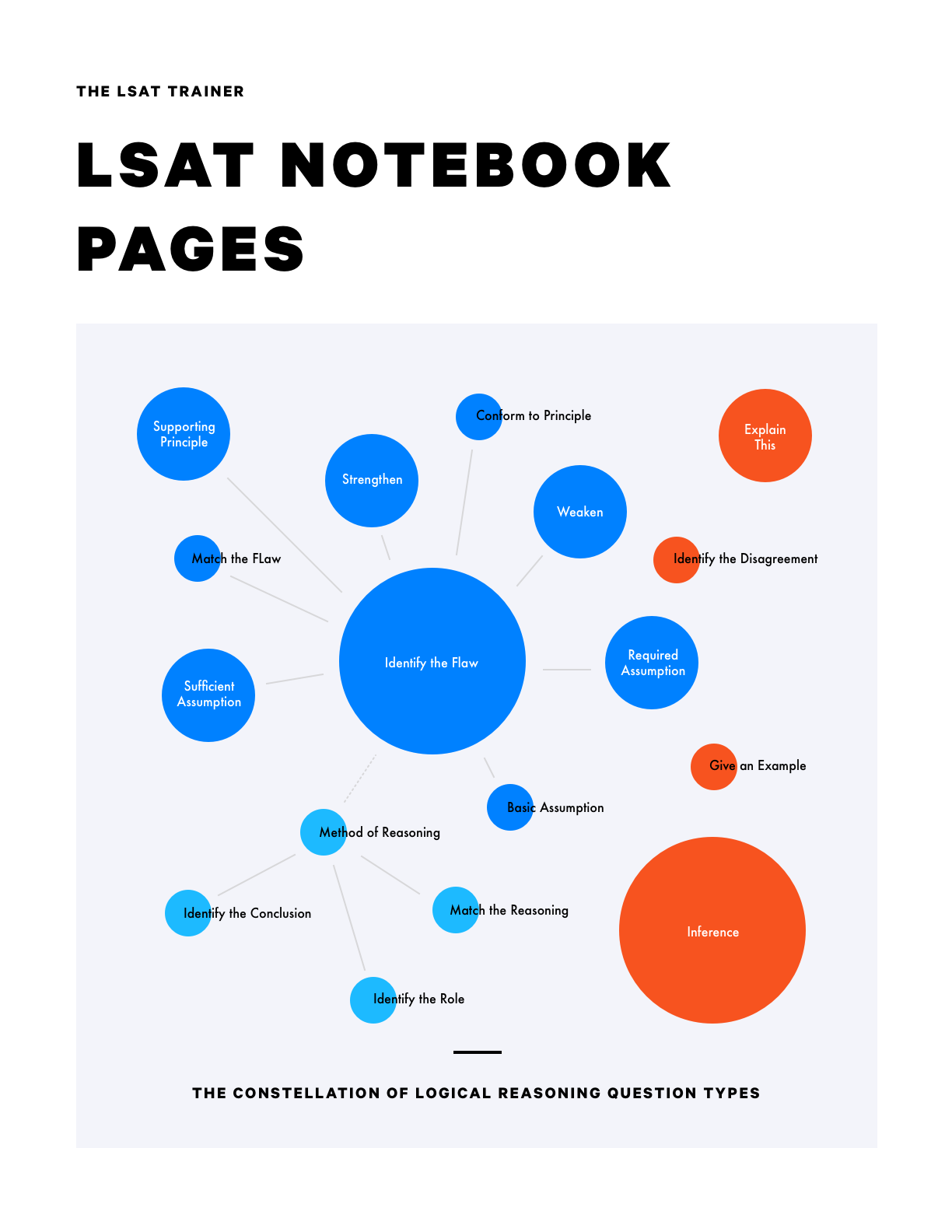Game 1 (Option 1)
Step 1
Per the given scenario and the first rule, we can write out the five elements to be placed - I, N, S, T, and W - notate which of those are general interest (g) or local (l), and lay out the five positions to be placed, with three spots in one segment and two in the next.
Step 2
We can utilize the second rule to understand the significance of the rules that follow - within each of the segments, a longer report must always come before a shorter one.
Step 3
Per the third rule, we can notate that each segment must have at least one L. We can also notate this by stating that all three L’s can’t go together in the first segment, as we have here.
Step 4
Per the fourth, fifth, and sixth rules, we know that N must always go first in any segment, S must always go last in any segment, and I must go before W in any segment. We can link and notate all of these ordering rules together.
Step 5
We can also notate that T is not mentioned directly in any of the rules.
Game 1 (Option 2)
Step 1
Per the given scenario and the first rule, we can write out the five elements to be placed - I, N, S, T, and W - notate which of those are general interest (g) or local (l), and lay out the five positions to be placed, with three spots in one segment and two in the next.
Step 2
We can utilize the second rule to understand the significance of the rules that follow - within each of the segments, a longer report must always come before a shorter one.
Step 3
Per the fourth rule, we can split our diagram into two frames: one with N at the beginning of the first segment, and another with N at the beginning of the second.
Step 4
Per the fifth rule, we can further split our two frames again, with each split representing the fact that S can either go at the end of the first segment or the end of the second.
Step 5
Per the sixth rule, we can notate that I must go before W.
Step 6
Per the third rule, we can infer that in frame 2A, the second report in the second section must one of the two remaining local reports T or W.
Step 7
We can notate that T is not mentioned directly in any of the rules.
Game 2 (Option 1)
Step 1
Per the given scenario, we can write out the five elements to be placed - Q, R, S, T, and V.
Step 2
Per the first and second rules, we can create three frames, representing our three options for placing R either first or second and T either first or last: R in 1 and T in 5, R in 2 and T in 1, and R in 2 and T in 5.
Step 3
Per the third rule, we can notate that either Q or V must be placed into the third position.
Step 4
Per the fourth rule, we can notate that Q and S cannot be placed consecutively.
Step 5
In frame 1, per the third and fourth rules, we can infer that V must go in the third position (otherwise Q and S would be consecutive), and that leaves Q and S, in either order, for open positions 2 and 4.
Step 6
In frame 2, per the third and fourth rules, we can infer that Q must go in the third position (otherwise Q and S would be consecutive) with V in the fourth position and S in the fifth.
Game 2 (Option 2)
Step 1
Per the given scenario, we can write out the five elements to be placed - Q, R, S, T, and V.
Step 2
Per the first and second rules, we can create three frames, representing our three options for placing R either first or second and T either first or last: R in 1 and T in 5, R in 2 and T in 1, and R in 2 and T in 5.
Step 3
Per the third rule, we can split these frames up further, based on whether Q or V occupies the third position.
Step 4
Per the fourth rule, we can know that frame 1A can’t work and cross that out, and in frame 1B Q and S must occupy the remaining two positions, 2 and 4, in either order.
Step 5
Per the fourth rule, in frame 2A, V must go in 4 and S in 5, and frame 2B can’t work.
Step 6
Per the fourth rule, in frame 3A, S must occupy the first position and V the fourth. In frame 3B, S and Q must occupy the remaining two positions, 1 and 4, in either order.
Step 7
We are left with four working total, and, optionally, we can rewrite them out to make things neater for our work moving forward.
Game 3
Step 1
Per the given scenario, we can write out the five elements to be placed - V, W, X, Y, and Z, and we can lay out the possible assignments - I, N, and S.
Step 2
Per the first rule, we can notate that W and Y must be assigned together.
Step 3
Per the second rule, we can notate that X must be assigned to N or S. Alternatively, as we have done here, we can notate, that X cannot be assigned to I.
Step 4
Per the third rule, we can notate that there are more elements assigned to I than N. We can also notate the inference that at least one element must thus be assigned to I.
Step 5
Per the fourth rule, we can notate conditionally that if V is from I, then Z must be from S, as well as the contrapositive.
Game 4
Step 1
Per the given scenario, we can write out the four elements to be placed - J, K, L, and M, and we can also lay out positions - 4 in order - for each of the four workpieces. Per the given scenario, we can assign the first shift of each of the workpieces to each of the four employees.
Step 2
Per the first rule, we can notate that M cannot immediately follow J. We can also make and notate an inference that that when J is first, L or K must be second.
Step 3
Per the second rule, we can notate that J cannot immediately follow K. We can also make and notate an inference that when K is first, L or M must be second.
Step 4
Per the third rule, we can notate that J cannot immediately follow L. We can also make and notate the inference that when L is first, K or M must be second.
Step 5
Since J now can’t be second anywhere else, we can infer that J must be second when M is first.



